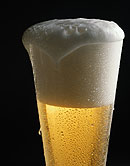
FRIDAY, Nov. 30 (HealthDay News) — Scientists who identified the first gene for beer foam say their finding could lead to improving the frothy head that’s so important to the aroma and visual appeal of your favorite brew.
Proteins from the barley and yeast used to make beer contribute to the quality of its foam, the researchers explained in the study, which was published recently in the Journal of Agricultural and Food Chemistry.
The foamy head on beer consists of bubbles containing carbon dioxide gas, which is produced by yeast during fermentation. Proteins cluster around the gas, forming the bubbles in the foam.
Previous research showed that proteins from the yeast stabilize the foam and prevent the head from disappearing too quickly. But until now, it wasn’t known which yeast gene made the foam-stabilizing protein.
The authors of this study identified that gene, which they call CFG1. It’s closely related to genes in wine and sake yeasts that are also involved in foaming, according to a journal news release.
“Taken together all the results shown in the present paper make CFG1 gene a good candidate to improve the foam character in the brewing industry,” the researchers concluded.
More information
The Canadian Broadcasting Corporation offers a brief history of beer.

